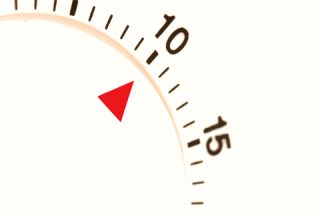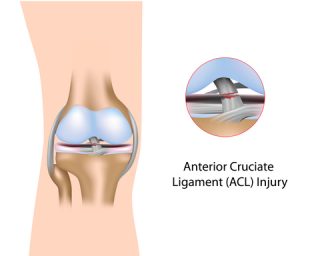Written by Michelle Champlin BSc Pod., M.Ch.S., S.R., Ch., (UK)
The physical demands of ballet compare to those of many sports, although the demands on the feet, knees and hips can be extreme. 15-20% of dance injuries involve the foot. Chronic injuries tend to predominate as they are related to the repetitive impact bearing of the dancer’s foot on a relatively hard surface.
Unlike other athletes, who wear shoes specially designed to stabilize the foot and absorb shock specific to their sport (e.g. tennis, netball shoes or rugby cleats), the ballet dancer wears only a thin slipper or toe shoe. Therefore, the majority of the forces of impact are absorbed by the foot and leg. Factors that can contribute to ballet related injuries include biomechanical anomalies, technique and fatigue.
Biomechanical And Technique Related Factors
The most important anatomic factor in classical ballet is proper turnout of the hip. All five basic positions require maximum external rotation of the hip. All ballet movements begin or end with one of these positions. Dancers with less “natural” turnout at the hip may compensate by forcing external rotation at the knee or foot and ankle joints. Rolling in (equivalent to overpronation), is a technique used by some dancers to compensate for limited external hip rotation. The result of this maneuver is increased strain on the medial structures of the foot and ankle, which can lead to longer term injuries.
A cavus foot type (high arched), with its more rigid midtarsal joints, can also cause some issues for ballet dancers. The cavus foot doesn’t dissipate energy as well, putting other structures at risk of ligamentous strain, fasciitis and stress fracture. When all the forces aren’t equally shared by the foot’s 5 metatarsal bones, the more stress-bearing metatarsals can be prone to stress fractures.
When the forefoot is splayed, sometimes due to a collapsed transverse arch, this can be a precursor to hallux valgus (bunions) and bunionettes. Bunions are common in dancers. They tend to begin at the end of the teens are seen in both male and female dancers. Pain tends to be worse at the end of class.
While the normal range of motion in the first MTP joint is about 60 degrees dorsiflexed (toes pointing up) and about 35 degrees plantarflexed (toes pointing down), dancers routinely have 90 to 100 degrees of dorsiflexion to allow a full relevé onto demi-pointe. This is usually obtained by dancing while the musculoskeletal system is forming so the joints can be molded – i.e. through childhood.
Sesamoiditis and sesamoid fractures can be irritating to dancers as they may heal quite slowly. Sesamoiditis has many causes, including contusion or stress fractures, osteonecrosis or osteoarthritis.
Trapped or irritated nerves can also occur in dancers – such as neuritis or Morton’s Neuromas, which may mimic sesamoiditis. In this condition. Your Podiatrist will be able to distinguish between the two.
Corns are extremely common also, and can be easily enucleated by a Podiatrist – don’t ever surgically ‘cut out’ orthotics or apply salicylic acid corn pads, as these can damage the healthy skin or leave scarring.
You can find out more about dance surfaces and ballet shoes and their effect on dance injuries here.
Evaluating Ballet Injuries
Dancers should bring their slippers and pointe shoes to the podiatry consultation so they can be examined for signs of abnormal stress or use and possibly even worn to demonstrate positions that cause pain. The full biomechanical foot assessment may be extended by the Podiatrist asking you to perform the problematic or painful positions.
Treating Injuries
Epiphysitis: Ballet dancers need increased range of motion in their 1st MTP joint (big toe joint). People are rarely born with this much motion in this joint, so it must be obtained by some molding of the growth plates at the end of the toe bone (phalange). In adolescence, this can result in tenderness, inflammation and pain during activity which is alleviated by rest. The condition will go away once the dancer has stopped growing. This condition, is similar to Osgood-Schlatter’s Disease of the knee sometimes seen in sporty children.
Re treatment generally, maneuvers and positions that elicit the pain may be limited for 4-5 weeks and then cautiously reintroduced.
For bunions and bunionettes, padding with special adhesive lamb’s wool around the tender area is a simple and effective means of relieving pain. Dubai Podiatry Centre’s Podiatrists also use this specialist padding to prevent blister formation in hikers and runners.
Gel toe spacers between the first and second toes can make the foot more functional, as this alignment maintains maximum motion in the MPJ. Wearing wide fitting shoes and sports shoes outside of ballet class as well will also help toes recover.
Although surgery (e.g. bunionectomies) may be advised to other patients suffering from painful, advanced stage bunions, professional dancers tend to avoid this at least during their active career as it will usually limit the motion in the first MPJ.
For treating sesamoiditis in dancers, performing sesamoidectomy surgery is usually not necessary for dancers because the pain will almost always go away with conservative therapy alone, although this can take up to a year. During this period, the Podiatrist may insert special small pads in footwear to offload the sesamoids and dancers should minimize demi-pointe work.
Custom orthotics can also be of benefit, especially to tighten the forefoot, alleviate metatarsalgia, correct ankles rolling in and a range of other biomechanical anomalies. These would be worn in regular footwear, when not dancing.
The biomechanics specialist podiatrists at Dubai Podiatry Centre, UK qualified and trained and led by renowned Chief Podiatrist Michelle Champlin, can be contacted on +971 4 3435390.
قلم ميشيل شامبلين
يمكن مقارنة المتطلبات الجسدية للباليه بتلك الخاصة بالعديد من الألعاب الرياضية، على الرغم من أن المتطلبات على القدمين والركبتين والوركين يمكن أن تكون شديدة. 15-20% من إصابات الرقص تصيب القدم. تميل الإصابات المزمنة إلى السيطرة لأنها ترتبط بالتأثير المتكرر لقدم الراقص على سطح صلب نسبيًا.
على عكس الرياضيين الآخرين، الذين يرتدون أحذية مصممة خصيصًا لتثبيت القدم وامتصاص الصدمات الخاصة برياضتهم (مثل التنس أو أحذية كرة الشبكة أو أحذية الرجبي)، يرتدي راقص الباليه شبشبًا رفيعًا أو حذاءًا رفيعًا فقط. لذلك، يتم امتصاص غالبية قوى التأثير عن طريق القدم والساق. تشمل العوامل التي يمكن أن تساهم في الإصابات المرتبطة بالباليه التشوهات الميكانيكية الحيوية والتقنية والتعب.
العوامل الميكانيكية الحيوية والتقنية ذات الصلة
العامل التشريحي الأكثر أهمية في الباليه الكلاسيكي هو الإقبال المناسب على الورك. تتطلب جميع الأوضاع الأساسية الخمسة أقصى قدر من الدوران الخارجي للورك. تبدأ جميع حركات الباليه أو تنتهي بأحد هذه الأوضاع. يمكن للراقصين ذوي الإقبال الأقل “الطبيعي” على الورك التعويض عن طريق فرض دوران خارجي عند مفاصل الركبة أو القدم والكاحل. التدحرج (أي ما يعادل الكبح الزائد)، هو أسلوب يستخدمه بعض الراقصين للتعويض عن دوران الورك الخارجي المحدود. نتيجة هذه المناورة هي زيادة الضغط على الهياكل الوسطى للقدم والكاحل، مما قد يؤدي إلى إصابات طويلة المدى.
يمكن أيضًا أن يسبب نوع القدم المقوسة (المقوسة العالية)، مع مفاصل منتصف الرسغ الأكثر صلابة، بعض المشكلات لراقصي الباليه. لا يؤدي تقوس القدم إلى تبديد الطاقة أيضًا، مما يعرض الهياكل الأخرى لخطر إجهاد الرباط والتهاب اللفافة وكسر الإجهاد. عندما لا يتم تقاسم جميع القوى بالتساوي بين عظام مشط القدم الخمسة، فإن مشط القدم الأكثر تحملاً للضغط يمكن أن تكون عرضة لكسور الإجهاد.
عندما تكون مقدمة القدم مفلطحة، أحيانًا بسبب انهيار القوس العرضي، يمكن أن يكون هذا مقدمة لإبهام القدم الأروح (الأورام) والأورام. الأورام شائعة في الراقصين. تميل إلى البدء في نهاية فترة المراهقة وتظهر في كل من الراقصين الذكور والإناث. يميل الألم إلى أن يكون أسوأ في نهاية الفصل.
في حين أن النطاق الطبيعي للحركة في المفصل MTP الأول هو حوالي 60 درجة عطف ظهري (أصابع القدم متجهة للأعلى) وحوالي 35 درجة ثني أخمصي (أصابع القدم متجهة للأسفل)، فإن الراقصين لديهم بشكل روتيني 90 إلى 100 درجة من العطف الظهري للسماح بالارتباط الكامل على نصف النقطة. . ويتم الحصول على ذلك عادة عن طريق الرقص بينما يتشكل الجهاز العضلي الهيكلي بحيث يمكن تشكيل المفاصل – أي خلال مرحلة الطفولة.
يمكن أن يكون التهاب السمسم والكسور السمسمانية مزعجًا للراقصين حيث قد يشفون ببطء شديد. هناك أسباب عديدة للالتهاب السمسماني، بما في ذلك الكدمات أو الكسور الإجهادية أو تنخر العظم أو التهاب المفاصل العظمي.
يمكن أيضًا أن تحدث الأعصاب المحاصرة أو المتهيجة عند الراقصين – مثل التهاب العصب أو ورم مورتون العصبي، والذي قد يحاكي التهاب السمسماني. في هذه الحالة. سيكون طبيب الأقدام الخاص بك قادرًا على التمييز بين الاثنين.
تعتبر مسامير القدم شائعة للغاية أيضًا، ويمكن استئصالها بسهولة من قبل طبيب الأقدام – لا تقم مطلقًا “بقص” تقويم العظام جراحيًا أو وضع ضمادات الذرة بحمض الساليسيليك، لأن ذلك قد يؤدي إلى تلف الجلد الصحي أو ترك ندبات.
يمكنك معرفة المزيد عن أسطح الرقص وأحذية الباليه وتأثيرها على إصابات الرقص هنا.
تقييم إصابات الباليه
يجب على الراقصين إحضار نعالهم وأحذيةهم المدببة إلى استشارة علاج الأرجل حتى يمكن فحصهم بحثًا عن علامات الإجهاد أو الاستخدام غير الطبيعي وربما حتى ارتدائها لإظهار الأوضاع التي تسبب الألم. قد يتم تمديد التقييم الميكانيكي الحيوي الكامل للقدم من قبل طبيب الأقدام ويطلب منك أداء الأوضاع المؤلمة أو المؤلمة.
علاج الإصابات: التهاب المشاش: يحتاج راقصو الباليه إلى نطاق حركة متزايد في المفصل MTP الأول (مفصل إصبع القدم الكبير). نادرًا ما يولد الأشخاص بهذا القدر من الحركة في هذا المفصل، لذلك يجب الحصول عليها عن طريق بعض قوالب صفائح النمو الموجودة في نهاية عظم إصبع القدم (الكتائب). في مرحلة المراهقة، يمكن أن يؤدي ذلك إلى الألم والالتهاب والألم أثناء النشاط الذي يخفف من الراحة. سوف تختفي الحالة بمجرد توقف الراقص عن النمو. تشبه هذه الحالة مرض أوسجود-شلاتر الذي يصيب الركبة والذي يظهر أحيانًا عند الأطفال الرياضيين.
إعادة العلاج بشكل عام، قد تكون المناورات والوضعيات التي تسبب الألم محدودة لمدة 4-5 أسابيع ثم يعاد تقديمها بحذر.
بالنسبة للأورام والوكعات، فإن الحشو بصوف الحمل اللاصق الخاص حول منطقة الألم هو وسيلة بسيطة وفعالة لتخفيف الألم. كما يستخدم أطباء الأقدام في مركز دبي لعلاج الأرجل هذه الحشوة المتخصصة لمنع تكون البثور لدى المتنزهين والعدائين.
يمكن أن تجعل فواصل أصابع القدم الهلامية بين إصبع القدم الأول والثاني القدم أكثر وظيفية، حيث تحافظ هذه المحاذاة على أقصى قدر من الحركة في MPJ. إن ارتداء أحذية واسعة وأحذية رياضية خارج صفوف الباليه سيساعد أيضًا في تعافي أصابع القدم.
على الرغم من أنه قد يُنصح بإجراء عملية جراحية (مثل استئصال الورم) للمرضى الآخرين الذين يعانون من أورام مؤلمة ومتقدمة، فإن الراقصين المحترفين يميلون إلى تجنب ذلك على الأقل خلال حياتهم المهنية النشطة لأنه عادة ما يحد من الحركة في MPJ الأولى.
لعلاج التهاب السمسماني عند الراقصين، عادةً لا يكون إجراء جراحة استئصال السمسماني ضروريًا للراقصين لأن الألم سيختفي دائمًا تقريبًا بالعلاج المحافظ وحده، على الرغم من أن هذا قد يستغرق ما يصل إلى عام. خلال هذه الفترة، قد يقوم طبيب الأقدام بإدخال وسادات صغيرة خاصة في الأحذية لتفريغ السمسمويدات ويجب على الراقصين تقليل العمل النصفي.
يمكن أن تكون أجهزة تقويم العظام المخصصة مفيدة أيضًا، خاصة لشد مقدمة القدم، وتخفيف آلام مشط القدم، وتصحيح تدحرج الكاحلين، ومجموعة من الحالات الشاذة الميكانيكية الحيوية الأخرى. سيتم ارتداؤها بالأحذية العادية عند عدم الرقص
يمكن الاتصال بأطباء الأقدام المتخصصين في الميكانيكا الحيوية في مركز دبي للعناية بالاقدام بالمملكة المتحدة، المؤهلين والمدربين بقيادة رئيسة أطباء الأقدام المشهورة ميشيل شامبلن، على 043435390






